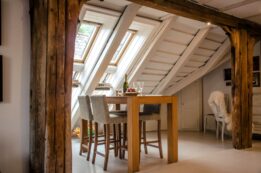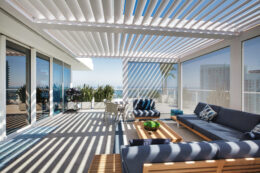Art is the highest expression of the human mind. In addition, art helps to make your home a home. Whether it’s a precious collection of works of art by famous artists or your family members, the works of art on the walls, on the shelves and in the corners determine the atmosphere of your home.
The works of art you bring into your home must be in harmony with the general style of decoration. Not all works of art are suitable for all styles and any inconsistency in this respect can create an unfavourable visual impression and atmosphere. It’s a bit frustrating, but never forget that the first work of art that catches your eye or warms your heart may not be the best choice for your room.
However, if you learn about artand train your eye, you will be able to spot the perfect work of art very quickly. Don’t consider this step a waste of time. Studying art and art history, absorbing and understanding the evolution of artistic styles is not only good for your interior. Knowledge of the arts enriches your whole life experience, makes you culturally more sophisticated and opens up many possibilities, especially in the fields of creation and commerce.
Now we will explore the main types and styles of art that can be found in your home. To avoid confusion, I will focus on the types of art that are easy to find inside.
Let’s go, let’s go, let’s go, let’s go!
Painting
Just as recent artistic movements have tried to redefine art, painting on canvas remains a kind of embodiment of art. It is difficult to imagine an artistic interior without a canvas (usually in the form of an oil painting).
However, this is the reason why some people think that they can hang any painting on the wall and that it will make the space more artistic and tasteful, as if by magic. Big mistake.
Over the course of art history, painting styles have evolved and diverged – and many. So you need expert advice to integrate different styles of murals into different types of interiors. Of course, you can always continue your studies and become your own expert. Let’s explore the basics of the painting style.
Figurative styles
People have been painting for a very long time – since our ancestors lived in caves. It is therefore not surprising that painting is the art form with the greatest variety of styles.
Of course we won’t talk about history here, although the last style mentioned here has to do with it. We will focus on styles from recent history. Oil paintings , as we know them now, have existed in Europe since at least the 12th century. For centuries. Here is a brief overview of most modern painting styles.
Realism
Realism, also called Naturalism, is a style that tries to depict subjects as realistically as possible.
This trend has been known since the beginning of painting in the Paleolithic, when patients developed amazingly realistic images of animals on cave walls. From ancient Greece and Rome to the Renaissance and then to the 19th century. In the 19th century, realistic and illusionistic painting continued to develop almost inexorably. Classical paintings often belong to the realm of realism, and great artists such as Da Vinci, Dürer, Vermeer, and Rembrandt have all followed realism as their dominant style.
In the 19th century. In the nineteenth century, realism freed itself from the surrealistic details associated with Romanticism and sought a more raw image – as, for example, in the paintings of Gustave Courbet ,.
Typical classical subjects in realistic painting are portraits,-nature,landscapes and .
In the 1950s, realism was transformed into another artistic style. This was Fantastic Realism, depicting motifs from the imagination in a realistic and very precise way. The best-known name of the Viennese School of Fantastic Realism is probably Ernst Fuchs .
The sculptures in the style of realism can be combined with different interiors, they adapt naturally to the classical, the antique, the rustic and the austere contemporary. They can even be tastefully integrated into modern, minimalist interiors – even if it requires a little care.
Hyperrealism
Hyperrealism, or photorealism, takes realism to a whole new level of precision. Influenced by the classical Baroque and Renaissance, but created with the gift of modern instruments and techniques, these paintings are so meticulously executed that they can be confused with photographs. Remarkable artists include: Claudio Bravo, Gottfried Helnwein, Noor Koczakand others.
Hyperrealism can also represent people or objects.
Paintings in the style of hyperrealism do not fit well in antique and classical interiors and are more beautiful in modern interiors.
Impressionism
Impressionism is a reaction to the strict precision of realism. This movement developed in the 19th century. It is a 19th century movement within a group of Parisian artists characterized by small but striking brushstrokes, everyday subjects such as landscapes and ordinary people, and an emphasis on capturing natural light and movement. Not so long ago, Impressionism had Neo-Impressionism , Post-Impressionism, Cubism, Fauvism and .
The most famous impressionist painter, probably the founder of the movement, Claude Monet .
Vincent van Gogh is also often referred to as an Impressionist, but his work is post-impressionist.
Impressionist paintings do not fit in modern, minimalist houses. They radiate closeness to nature and a certain comfort and are therefore suitable for areas with many natural materials. The natural lightness of the lines and the passion for light make it a good choice in areas dominated by white or other very light colours.
Pop Art
Born in the 1950s ( ), Pop Art was born out of the mass consumer culture – the media, advertising and other everyday images of the time. Pop Art transcends these seemingly superficial and inexpensive images, becoming a timeless work of art that symbolizes time and leaves the visual imprint of the mid-twentieth century. Wear the same clothes as at the beginning of the 20th century.
The best-known pop artists were Andy Warhol and Roy Lichtenstein . Keith Haring’s work is also considered Pop Art, but his paintings have more abstract and naive/primitive elements, so it probably deserves its own category.
Pop-art paintings do not fit into traditional, rustic or classical interiors. On the contrary, they go well with modern and contemporary interiors – both minimalist and detailed. In a predominantly white or black and white room, these pieces can be used to add a touch of colour. They can also be integrated into more colourful interiors – but be careful not to exaggerate.
Pop art design is also often available and works well in the form of prints and even posters. (Unlike many other types of paints).
Cubism
Cubism is considered one of the most influential artistic movements of the 20th century. She changed the European visual arts forever.
Cubism was a slap in the face for the craftsmanship and realism of the traditional classical painter. He rejected the traditional notions of perspective and modelling and opted for flat, two-dimensional image surfaces and images of subjects, often with sharp, unnatural lines. Cuban paintings often contain strong social or personal nuances and comments, such as B. Picasso’s Le Guernica.
The most famous painter of Cubism is undoubtedly Pablo Picasso , accompanied by Georges Braque, Paul Kleeand others. Salvador Daliand Frida Kahloalso find their place under the umbrella of cubism, although their works also belong to surrealism and fantastic realism respectively.
Inside, Cubism can be integrated into classical, modern and contemporary interiors, depending on the exact style of the work of art.
Note
Abstract painting is a contemporary pictorial movement that plays with colors, shapes, patterns,lines, shadows and – creating a visual language of another world instead of trying to represent realistic objects or creatures.
The characteristics of abstract art vary greatly from artist to artist, from the simple black square by Kazimir Malevich(probably the first painting in history to have nothing on it) to the colourful and playful by Wassily Kandinsky .
A subcategory of abstract art is Minimalist (abstract) art – the best-known example is Table Iby Piet Mondrian, whose basic geometry of colour (square forms) and black lines would become the hallmark of his work.
Because of its independent but very elegant character, abstract art is very popular in interior design and fits into various homes (but especially modern and contemporary).
Naive images
Naive Art is defined as a kind of artwork created by an unskilled and illiterate naive artist. The works of the artists of formationwho imitate this style are called primitivism or pseudo-naive art.
With rich colors and unrealistic shapes and lines, naive paintings often have a dreamy, off-world quality, even when they depict real events.
The naive paintings fit well in traditional, folk and rustic interiors. They often have saturated colors, so keep this in mind when trying to integrate them into rooms that already have a lot of color.
Watercolour Paintings – Watercolour
Water colourWater colour or Water colouris a painting technique that uses a special type of paint – transparent water colour instead of the typical opaque paints. This technique gives the images a light quality. Although watercolour can reach an impressive level of precision in expert hands, the technique is even used in scientific illustrations.
The watercolours were first used in landscape painting at the end of the 19th century in France. Popular at the beginning of the 20th century. It is clear that the timing of the appearance of watercolour, as well as the atmosphere of the paintings, coincides somewhat with Impressionism.
Due to the specificity of water-based paints, watercolour is painted on paper – usually a special quality suitable for these very water-based paints.
How watercolours fit into your home depends on the style of the paint itself, but their inherent lightness and bright background make them best suited for bright interiors – with plenty of natural light. Watercolor can be a great way to bring real art into the children’s room, where oil paint often doesn’t fit and seems out of place.
Paintings and murals
Remember when I first mentioned the type of artwork associated with rock art? A mural, also known as a mural, is a type of painting that is applied directly to the wall and is determined by this characteristic rather than by the style of the mural itself.
Of course, wall paints are very durableand have a high impact resistance – they permanently cover a large wall surface. It may not be the right choice for everyone, but in large rooms with lots of wall space it can work wonders. This makes the mural a popular choice for trendy cafes and offices.
Because the style itself depends on your preferences and the artist you choose, the mural can be combined with many different styles of interior design. The most popular styles in mural painting are fantastic realism ( ), abstraction, minimalist abstraction ( ) and .Some choose( ) graffiti to give their interior a street atmosphere.
Seal and Poster
Prints have several advantages over paint: they are cheaper than, the range is large and in the case of unlimited series they are interchangeable. That’s why you will find posters and art reproductions as decoration in offices, cafes and other common areas. However, its use in interior design is by no means limited to public space.
The fact that you can choose from different styles means that you can find an impression for literally any type of interior, which means that finding the right decoration will be much easier than when you are looking for the perfect image.
Speaking of ease of search, printed art is much easier to find online.
The biggest disadvantage is of course that, unlike paintings, prints are not unique works of art. Nevertheless, most prints are made in limited editions and, as with paintings, their value increases over time if they are made by a well-known artist.
But,, are the prints and the posters the same? .
Certainly not!
Let’s look at the difference between an art print and a poster.
Message
The displays are usually (but not always) printed in bulk in standard print formats. But perhaps modern posters don’t deserve the bad reputation they have inherited from their old kitschy and mass-produced cousins, because many independent artists now offer their illustrations as posters – and their creativity is astonishing. You could say that the internet market has changed the face of the poster as an art form.
In addition, there are some specific sub-collections of posters with works of art that do not appear in other formats. scientific posters, such as– with illustrations of different species, their anatomy – or other natural phenomena can be a unique addition to a number of rooms, including children’s rooms. Posters for concerts and other events are another category of posters that have a higher value, regardless of their uniqueness or print quality.
If you want to change the content of your walls often, posters are definitely worth considering. Of course an elegant framing is a must.
Art prints
Unlike posters, fine art prints are produced in limited editions and are usually made by hand, such as B. woodcut, linocutor silkscreen, making each print at least slightly different and unique. All the materials used, from paper to ink, are generally of a much higher quality than industrial prints, making the artwork more durable and valuable.
Therefore, art prints can participate in the regular art market and prints by well-known artists can be a valuable addition to art collections.
Images
So far we have focused on two-dimensional art, but with images you can add another dimension to the decor of your home.
Although sculpture is a venerated art form, it is much less common in the home than paintings or prints. The reasons for this may be different. Some people are put off by the price of these works of art. Others find the sculptures too pretentious for their living space – we still regard them as museum installations.
In the following lines we will see why these two concepts are unfounded prejudices.
First of all, the sculptures need not resemble Michelangelo’sDavid – they are large, classic and cast in stone. There are sculptures of all sizes, made in different environments.
Every material that can be used to create an image gives it a different visual quality.
- Cast iron SculptureSculptureis beautiful, immaculate, sometimes even threatening, and can be an excellent choice for a dark industrial or rustic interior.
- Contemporary steel and other elegant metal sculptures fit well into minimalist, open and bright spaces.
- Wood Sculpturestranscends the natural, earthly simplicity and fits well in houses with a similar design.
- Marbles and other stone sculptures are usually monumental and need a lot of space, so the space doesn’t look stuffy. However, smaller parts can easily be integrated into the room.
- Ceramic sculptures can have a very modern look and offer a wide range of styles, shapes, colours and sizes.
Another interesting aspect of sculpture is that it is an art form that is not limited to the inner space. You can install a sculpture of a durable material in your garden and spread the artistic atmosphere outside your indoor space.
Some sculptures are made in the form of applied art and can serve an extra purpose in addition to their intrinsic beauty. As in the famous case of vases, anything from teapots to clothes racks can also be used as a sculpture (or vice versa).
Furniture as art
Speaking of applied arts, here’s another interesting point: did you know that a piece of furniture can also be a work of art?
When it comes to art, painting and sculpture are standard first thoughts. Furniture design, however, is an art in itself. Since furniture is the dominant element in any home, it is worthwhile to study and learn the artistic styles of furniture.
Here we will focus on antique furniture because their rarity makes them unique and often include original artistic restoration works. These original pieces (which can be expensive!) are true masterpieces in the world of furniture.
Antique furniture has a touch of another era – usually luxurious.
Take a look at some well-known styles of antique furniture.
baroque
Baroque styleis often associated with antiques. Founded in Italy in the 16th century, the Baroque was originally an expression of the grandeur and power of the Catholic Church. Curved lines, rich botanical and other intricate ornaments, solid wood and heavy upholstery are some of the main features of this luxury style that many modern joiners are trying to copy. The details and the gold finish should also be baroque.
Rococo
Rococo is the younger brother in the baroque style, and like all younger brothers and sisters he is more playful, lighter and relaxed than the older ones. Although the baroque exudes a sense of heaviness and drama, it still seems luxurious, but lighter and freer in its form. The decoration is less dramatic and dominant, and the graceful, often asymmetrical and elegant lines are superior. The rococo also has many gold details.
Art Deco
Art Deco is the most modern of all styles of antique furniture. In both architecture and design, Art Deco works are characterised by straight lines, simplicity, pronounced symmetry and daring total concepts.
Sculptures and other objects can also be a reflection of one of these styles.
Completion
There are many creative definitions of art and fascinating quotes from famous artists about this elusive essence. Paul Kleestates that art does not represent the visible, but makes the visible visible.
In the context of interior design and home furnishings, I would like to paraphrase by saying that art is not an addition to your home – it makes your home.
Integrating carefully selected works of art into your home will stimulate your senses and emotions, lift your soul – and do wonders for your status and reputation if you are interested.
Beware, art is exciting and contagious. Once you start discovering and learning the art, you may never be able to stop. And it’s a beautiful form of addiction.
I hope this article has helped you find your way in the fascinating world of art and its creators. What’s your favorite art style? Do you have the courage to bring art into your home or are you ashamed of it? Let us know in the comments!
Post views :
56
Related Tags:
types of art painting,types of art drawing,types of visual art,different types of arts and crafts,what are the 7 different forms of art,what are the different kind of art,mixing abstract and traditional art,style of arts in community,forms of arts in household,can you mix canvas and framed art,mix and match art prints,how to cluster art on a wall,transitional interior design,shabby chic interior design,interior design styles 2020,interior design styles list,urban modern interior design,interior design styles quiz,traditional furniture styles,decor interior us,antique furniture styles explained,where is the home of traditional art,traditional design,contemporary art styles,modern art styles,types of art styles drawing,digital art styles,art styles list,what are the 7 genres of art,fine art by movement,what is my art style called,pop art styles,painterliness,urban modern decor,transitional style,styles of art,different types of art to try,what are the 3 types of art,what style is my art,styles and forms of art according to development
























